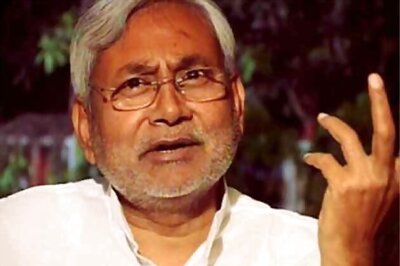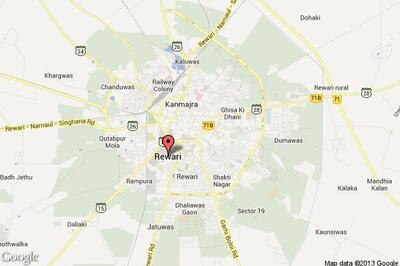
views
Hyderabad: Andhra Pradesh Chief Minister Chandrababu Naidu on Friday asked his people in the state to do what most Indians would consider bizarre. The Telegu Desam Party chief advised residents to have more than two children "without any worry".
Addressing a public gathering in Amaravati on Friday, Naidu said that he would get the clause quashed from the Panchayat Act, which does not allow a candidate to contest if he/she has more than two children. Naidu went on to urge the younger generation to not worry and take up a serious decision of having a child and do their due part in contributing to the ecosystem.
“The generation these days – half of them do not want to get married and even if they do, they do not want to have children. This is dangerous. They should take the responsibility of having at least one child.”
The rationale behind the Andhra CM setting aside the national campaign of “hum do, humare do” is evident from a clear crevice in the fertility rate of Southern and Northern India.
According to data from Family Health Survey of 2015, fewer babies are being born than people are dying in South India – a trend that would eventually result in a declining population. The trend does hold in North India with states such as Uttar Pradesh and Bihar – two states that together make up a quarter of India’s population – recording very high fertility rates of 2.74 and 3.41, respectively.
As an empirical example, in 1951, Tamil Nadu’s population was slightly higher than Bihar’s. Six decades later, Bihar’s population is nearly 1.5 times Tamil Nadu’s. Madhya Pradesh in 1951 had 37 percent more people than Kerala; in 2011, it had 217 percent as many.
This is not the first time that the chief minister had made such comments, it’s more like an yearly practice. He has been repeatedly asking people, especially the younger generation, to focus on having more children in a family to maintain balance in the ecosystem.
“There is population downfall in China and Japan and even a few European countries are joining the trend. We do not have a problem as such but if you see the birth ratio in our country is far lesser than the death ratio, which will create a situation in the long run,” Naidu said.
The direct effect of such a significant difference in scale of population will eventually be on the representation of states in Parliament. In 1976, Parliament had passed a constitutional amendment that froze the number of seats each state had in Parliament as per the 1971 Census. The freeze was to end in 2000 however, it was extended to 2026.
Considering the significant changes in population ever since, when the 2026 freeze ends the share of parliamentary seats of low fertility southern states will fall sharply.
The impact of unequal representation will be significant on Indian politics. With just two Prime Ministers from South India, the country is already politically dominated by the more populous Hindi states. For example, in the 2014 Lok Sabha election the Bharatiya Janata Party won 51 percent of its seats from just four states – Uttar Pradesh, Bihar, Rajasthan and Madhya Pradesh.
The southern states also contribute much more to the Indian Union’s finances per capita than, say, Uttar Pradesh or Bihar, but get much less funding from the Centre. Nor does their financial muscle translate to political heft.
Central transfers is also an evident inference of the stark difference in population. Madhya Pradesh, for example, gets two-thirds more central money than Karnataka, and Bihar 50 percent more than the Telugu-speaking states. However, central sources of data reveal that Southern states contribute to the overall GDP of India as compared with their Northern counterparts.
The skew in central transfers to the poorer states of the east and north is financed from the tax resources contributed by the southern and western states.
The matter of unequal financial justification was brought up last year when it became known that the Finance Commission may have been asked to increase transfers to the poorer states, at the cost of the states from where the bulk of the revenues come.
Meanwhile, Naidu pointed out that such an imbalance would create lack of younger population in the state which would have a direct impact on the growth of the state.


















Comments
0 comment